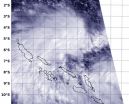(Press-News.org) LA JOLLA-- Mice that have a genetic version of mitochondrial disease can easily be mistaken for much older animals by the time they are nine months old: they have thinning grey hair, osteoporosis, poor hearing, infertility, heart problems and have lost weight. Despite having this disease at birth, these mice have a "secret weapon" in their youth that staves off signs of aging for a time.
New research from the Salk Institute reveals how a longevity hormone helps these mice--born with thousands of mutations in their energy-generating mitochondria--maintain metabolic homeostasis at a young age. This work provides insight into potential new therapies for mitochondrial and metabolic diseases in humans.
"These findings help us understand the link between diet, health and aging, and they give us the potential to dissect these connections in a molecular way that could lead to therapeutics," says Ronald Evans, director of Salk's Gene Expression Laboratory and senior author of the new paper, published June 29, 2015 in Proceedings of the National Academy of Sciences.
When Evans and collaborators studied these mice, they found that the longevity-promoting endocrine hormone FGF21 was highly active, even though these mice display hallmarks of accelerated aging.
"FGF21 is classically thought of as an anti-aging gene, turned on by exercise or fasting and suspected to extend lifespan," says Christopher Wall, a graduate student in the Evans lab at the time of the study and first author of the new paper. "Yet these mice ultimately age prematurely, despite having high levels of this hormone."
To explain this paradox, the team found that FGF21 actually assists stressed mitochondria and reprograms the metabolic state of these mice. In the paper, Evans and collaborators describe how FGF21 appears to switch tissues with important metabolic functions from burning sugar to burning fat--which is easier fuel for the dysfunctional mitochondria to process.
"This works for a while in these mice, but eventually their bodies run out of fat to burn," says Michael Downes, a senior staff scientist at Salk involved in the new study. "FGF21 needs some additional fat from the diet to keep working." The team also found that feeding the mice a high-fat diet amplifies the effects of FGF21, granting them complete resistance to diet-induced obesity and many of its associated diseases.
"What we believe now is that turning on FGF21 is an adaptation to help this animal maintain its metabolic health," says Evans, a Howard Hughes Medical Institute investigator and the March of Dimes Chair in Molecular and Developmental Biology. "If the mice didn't have this hormonal 'fountain of youth,' they might age even more quickly than they already do."
The new observation has the potential to impact human health in multiple ways, says Evans. Elevated FGF21 levels have previously been observed in people with mitochondrial diseases, so increasing dietary fat intake could potentially ease their symptoms by helping the hormone reduce the strain on the mitochondria. At the same time, these findings suggest that using drugs to mildly stress mitochondria could activate a beneficial FGF21-dependent metabolic shift in patients suffering from obesity and other metabolic diseases.
"We want to look at the interaction between FGF21 and dietary fat in human patients with mitochondrial disease now," says Downes, "and start to see how we can manipulate this dynamic in different ways."
INFORMATION:
Other researchers on the study were Jamie Whyte, Jae M. Suh, Weiwei Fan, Brett Collins, Ruth Yu, and Annette R. Atkins of the Salk Institute; Christopher Liddle of the University of Sydney; and Jane C. Naviaux, Kefeng Li, Andrew Taylor Bright, William A. Alaynick, and Robert K. Naviaux of the University of California, San Diego School of Medicine.
The research was supported by the Howard Hughes Medical Institute, the National Institutes of Health, the Glenn Foundation for Medical Research, the Leona M. and Harry B. Helmsley Charitable Trust, Ipsen/Biomeasure, the Ellison Medical Foundation, the Samuel Waxman Cancer Research Foundation, the Jane Botsford Johnson Foundation, the University of California, San Diego (UCSD) Christini Foundation, the UCSD Mitochondrial Research Fund, and the Wright Family Foundation.
About the Salk Institute for Biological Studies:
The Salk Institute for Biological Studies is one of the world's preeminent basic research institutions, where internationally renowned faculty probes fundamental life science questions in a unique, collaborative and creative environment. Focused both on discovery and on mentoring future generations of researchers, Salk scientists make groundbreaking contributions to our understanding of cancer, aging, Alzheimer's, diabetes and infectious diseases by studying neuroscience, genetics, cell and plant biology, and related disciplines. Faculty achievements have been recognized with numerous honors, including Nobel Prizes and memberships in the National Academy of Sciences. Founded in 1960 by polio vaccine pioneer Jonas Salk, MD, the Institute is an independent nonprofit organization and architectural landmark.
Forest composition, ground cover and topography are the best predictors of forest fire severity in the Western U.S., according to Penn State physical geographers who also see that the long history of fire exclusion on federal lands leads to uncharacteristically severe burns and potentially changes the dynamics of forests and their recovery.
A hunter's illegal campfire in Stanislaus National Forest adjacent to Yosemite National Park started what would become the Rim fire, the third largest fire in California history, that burned from August through October 2013. The fire ...
WEST LAFAYETTE, Ind. - Researchers who developed a high-speed form of atomic force microscopy have shown how to image the physical properties of live breast cancer cells, for the first time revealing details about how deactivation of a key protein may lead to metastasis.
The new findings also are providing evidence for the mechanisms involved in a cell's response to anti-cancer drugs, said Arvind Raman, Purdue University's Robert V. Adams Professor of Mechanical Engineering.
In atomic force microscopy (AFM), a tiny vibrating probe called a cantilever passes over a material, ...
This news release is available in French. Montreal, June 30, 2015 -- Unsafe drinking water is a topic usually connected to the developing world. But the regular recurrence of boil-water advisories, and widely publicised outbreaks in towns like Walkerton and Kashechewan have shown that, even in Canada, clean water cannot be taken for granted.
The increased scrutiny that arose from such issues has resulted in widespread criticism of the uneven drinking water regulation among Canada's provinces and territories.. However, centralizing water regulation is not necessarily ...
The Southern Pacific Ocean Tropical Cyclone Season just got an extension with the birth of a new tropical depression near the Solomon Islands. NASA's Aqua satellite passed over the new depression and saw that it was already affecting some of the islands.
The Solomon Islands make up a nation that consists of hundreds of islands in the South Pacific.
The MODIS or Moderate Resolution Imaging Spectroradiometer instrument aboard NASA's Aqua satellite captured a visible image of Tropical Depression 25P as it was forming in the Southern Pacific, just north of the Solomon ...
NASA-NOAA's Suomi NPP Satellite passed over the newborn ninth tropical depression of the Northwestern Pacific Ocean typhoon season on June 30.
At 02:55 UTC (10:55 p.m. EDT, June 29), the VIIRS or Visible Infrared Imaging Radiometer Suite (VIIRS) instrument aboard NASA-NOAA's Suomi satellite captured a visible image of the newly developed depression. The VIIRS image revealed bands of thunderstorms wrapping into the low-level center from the north and western quadrants.
VIIRS collects visible and infrared imagery and global observations of land, atmosphere, cryosphere ...
CHICAGO -- While studying Yersinia pestis, the bacteria responsible for epidemics of plague such as the Black Death, Wyndham Lathem, Ph.D., assistant professor in microbiology-immunology at Northwestern University Feinberg School of Medicine, found a single small genetic change that fundamentally influenced the evolution of the deadly pathogen, and thus the course of human history.
In a paper published in Nature Communications, Lathem and first author Daniel Zimbler, Ph.D., a Feinberg post-doctoral fellow, demonstrated how the acquisition of a single gene caused the ...
June 30, 2015, NEW YORK -- A new animal study by NYU Langone Medical Center researchers adds to growing evidence that multiple courses of commonly used antibiotics may have a significant impact on children's development.
In the study, to be published online June 30 by the journal Nature Communications, female mice treated with two classes of widely used childhood antibiotics gained more weight and developed larger bones than untreated mice. Both of the antibiotics also disrupted the gut microbiome, the trillions of microbes that inhabit the intestinal tract.
Overall, ...
Washington, DC - June 30, 2015 - A new report released today from the Institute of Medicine calls for a campaign to promote public education and training opportunities to reduce barriers to the provision of bystander CPR and defibrillation.
Annual rates of CPR and AED use by bystanders remain less than three percent in the United States even though evidence indicates that its use significantly improves cardiac arrest survival. The American Red Cross strongly supports the IOM's recommendation to encourage training through employers, local public health departments, schools ...
Bethesda, MD (June 30, 2015) -- Both spouses and first-degree relatives of patients with celiac disease are at increased risk of nonceliac autoimmune disease, according to a study in the July issue of Clinical Gastroenterology and Hepatology, the official clinical practice journal of the American Gastroenterological Association. This risk represents a mixture of genetic, environmental and ascertainment bias mechanisms.
"The prevalence of celiac disease in first-degree relatives of individuals with celiac is approximately 10 percent. Despite these findings, little is ...
Bethesda, MD (June 30, 2015) -- Pinaverium offers quick and effective relief of irritable bowel syndrome (IBS) symptoms, according to clinical trial results published in Clinical Gastroenterology and Hepatology, the official clinical practice journal of the American Gastroenterological Association.
Pinaverium bromide (pinaverium), an antispasmodic, is used widely in many countries around the world, including European countries, Canada and Mexico. However, original clinical studies on pinaverium are scarce and there has been no convincing evidence for its effectiveness ...



